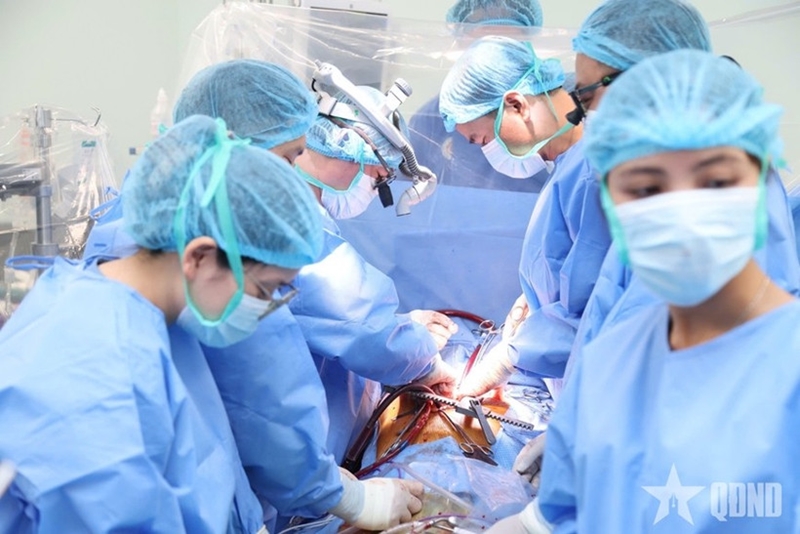In this case, the hospital retrieved the heart, two kidneys (one of which was transplanted into a serviceman), and the liver - which was split for transplant into two patients. The right lobe was transplanted into a male soldier at the hospital, while the left lobe was allocated to Vinmec Hospital for transplant into a one-year-old child. Two corneas were preserved for future transplants, and the lungs were transferred to the National Lung Hospital.
    |
 |
|
Doctors at Military Central Hospital 108 perform a heart transplant. (Photo: qdnd.vn) |
The donor was a 42-year-old man declared clinically deceased following a stroke. After being informed of his condition, the donor’s family agreed to donate his organs to save six patients awaiting the chance of survival.
Once the Organ Transplant Centre at Military Central Hospital 108 received confirmation of the organ donation, all relevant transplant subcommittees, departments and units were immediately mobilized. Coordination, patient preparation, resuscitation, laboratory testing, anesthesia and surgical teams all operated in synchrony.
A consultation meeting chaired by Lieutenant General Assoc. Prof. Dr. Nguyen Hoang Ngoc, Deputy Director of the hospital, started at 10am on November 22 and lasted nearly two hours. At 13:45 the same day, military medical teams began the multi-organ retrieval, with five operating theatres activated simultaneously.
Assoc. Prof. Dr. Nguyen Minh Ly, head of the Department of Anesthesiology and Intensive Care, said that once they receive notice of a planned multi-organ retrieval, their staff are immediately placed on standby. Within an hour of the official notification and conclusion of the consultation council, the entire anesthesia and resuscitation team is assembled.
Assoc. Prof. Dr. Vu Van Quang, deputy head of the Hepato-Biliary-Pancreatic Department, noted that in multi-organ donation cases, timing is critical. For the heart, the ideal cold ischemic time is under four hours, while for the liver it is approximately six to eight hours. Therefore, all stages must be prepared meticulously and carried out with urgency.
For the liver transplant, surgeons divided the organ in-situ to prepare for the two recipients. This was the ninth time the hospital has performed the technique. For the heart transplant, surgeons operated on a 68-year-old male patient diagnosed with stage III heart failure and severely reduced ejection fraction. At 17:28 the same day, the first heartbeat appeared on the monitor.
After surgery, the liver transplant patient was alert and extubated in the operating room. The heart transplant patient was hemodynamically stabilized, and both kidney transplant recipients were in stable condition with clear urine and good output. All patients continue to receive close monitoring and intensive care.
Source: VNA